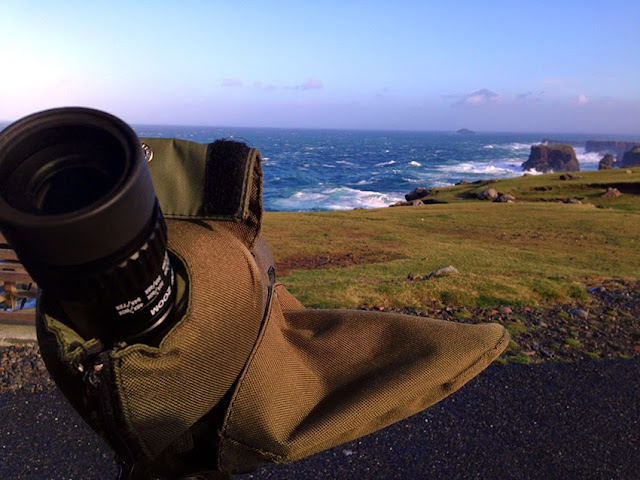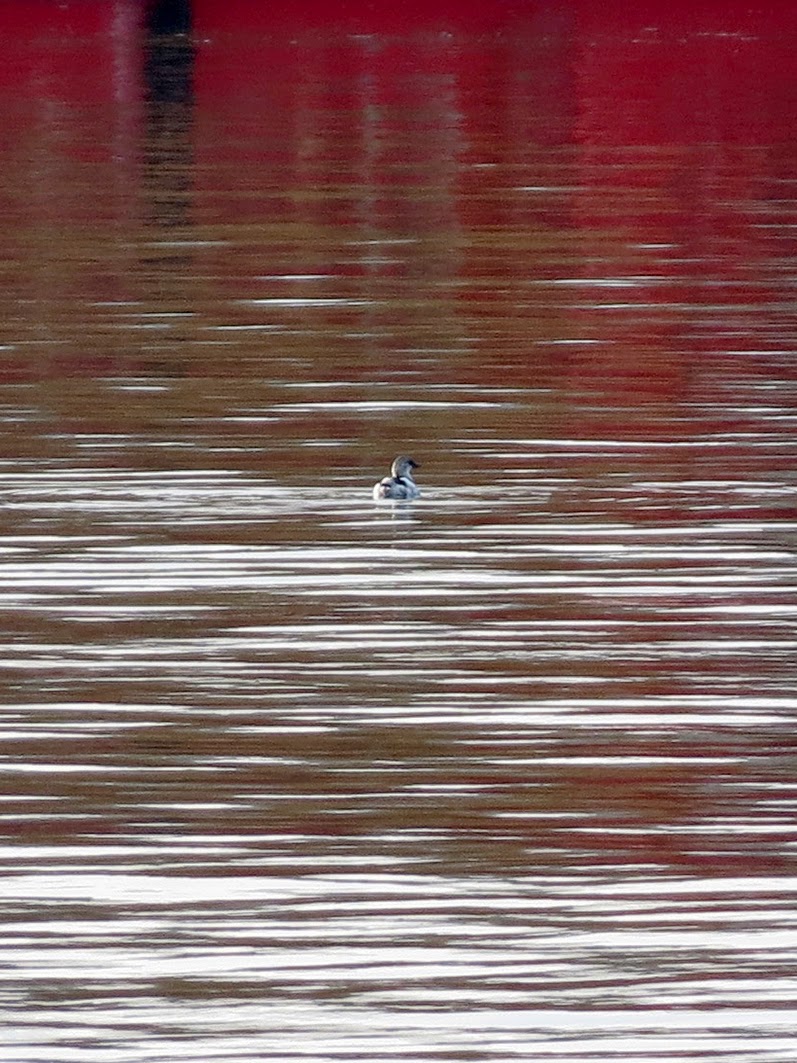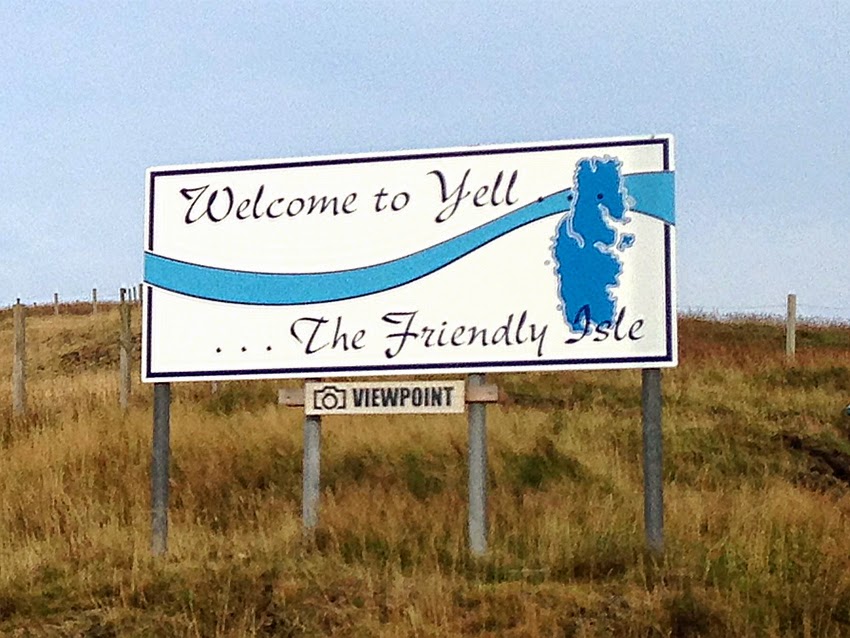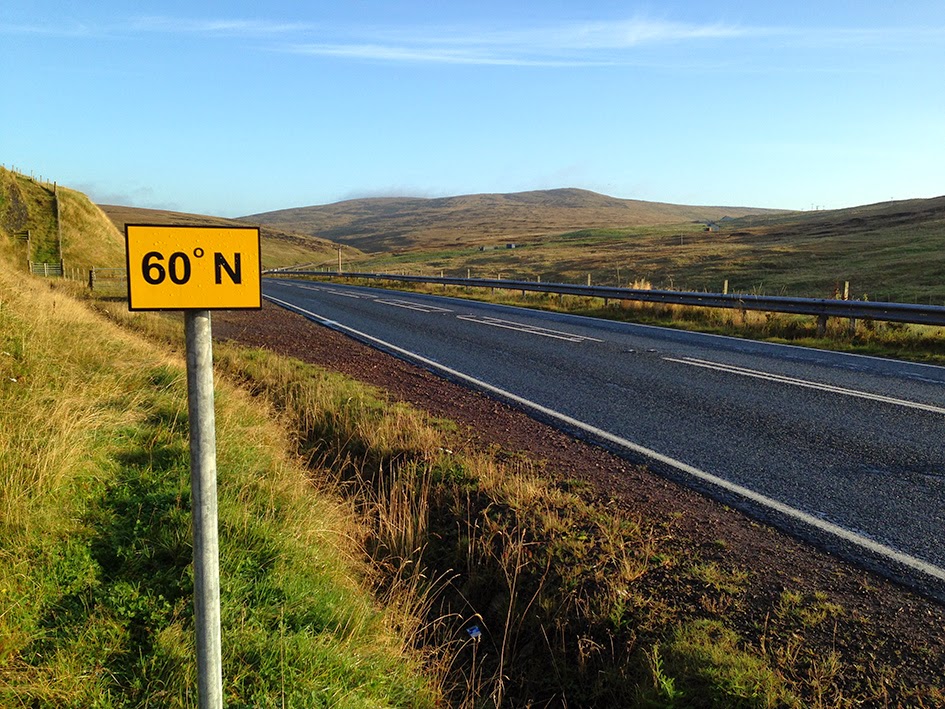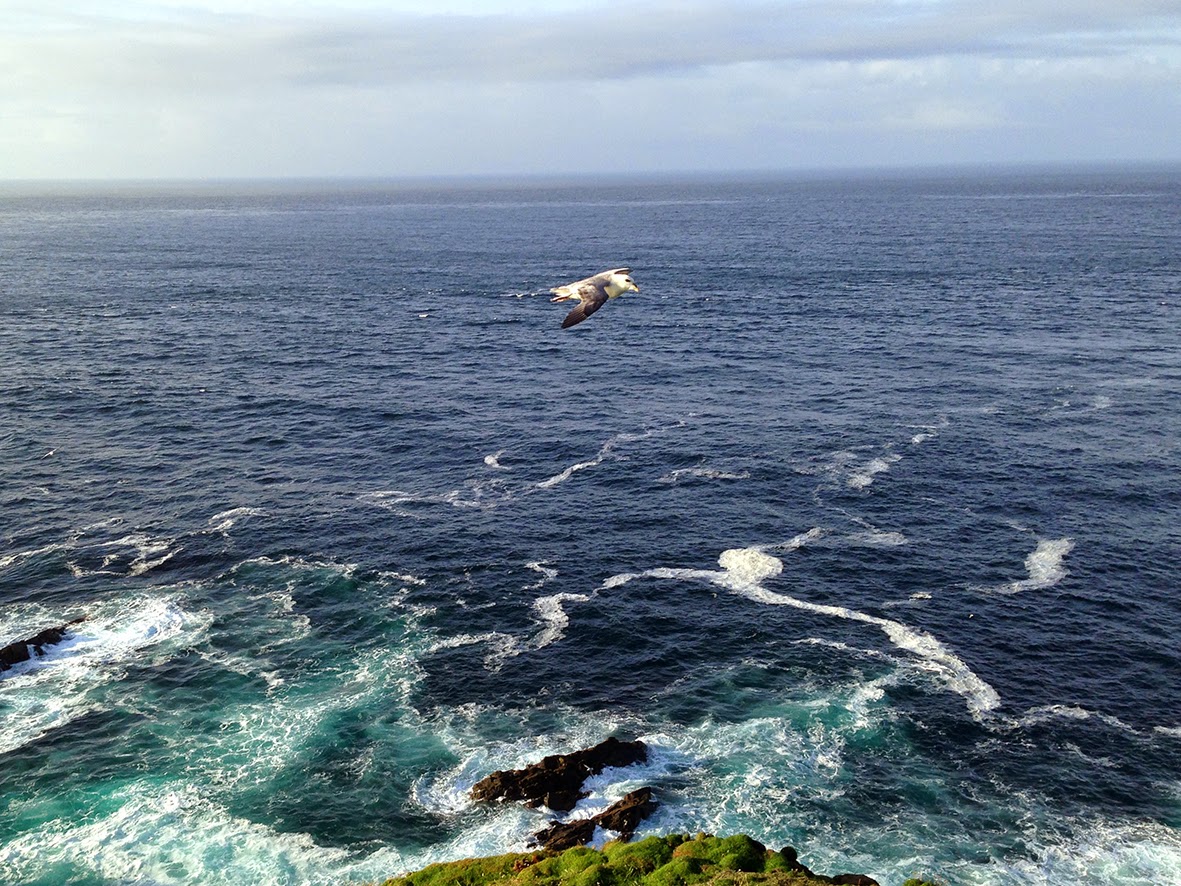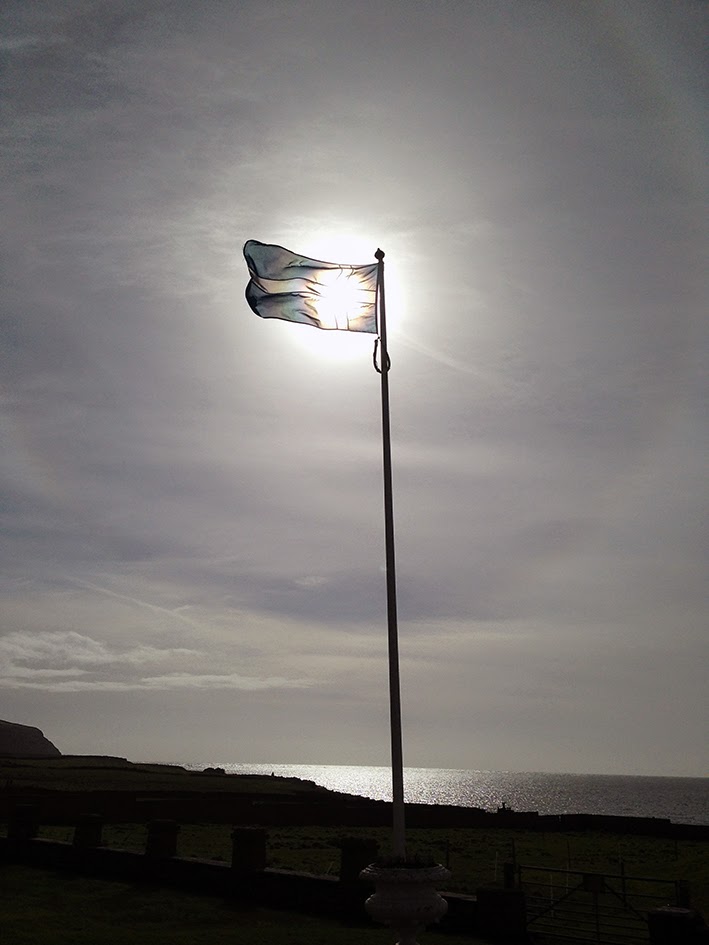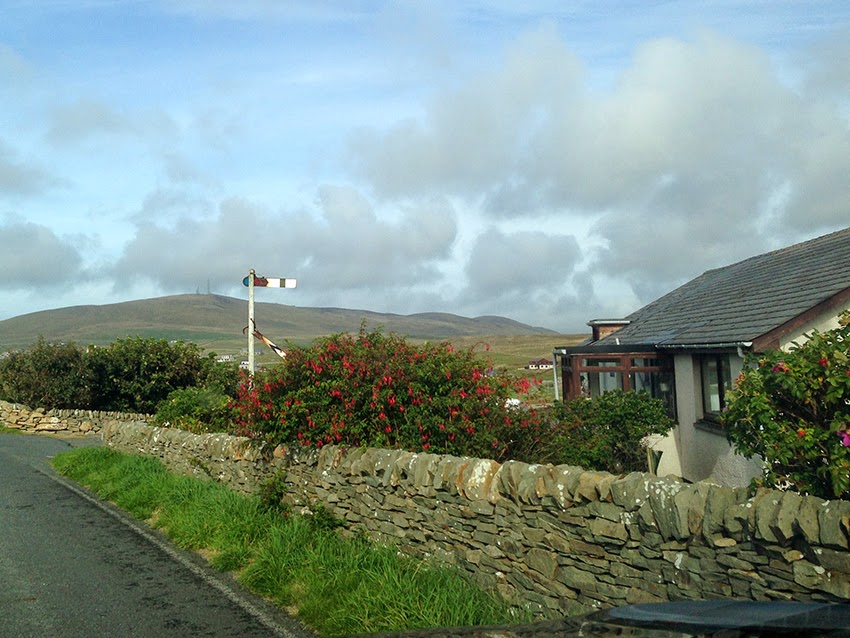Following on from
Shetland Birding, September 2014 - Part 1...
Day 4
We started our forth full day in Veensgarth, north of Lerwick, looking for a Hoopoe which had been reported that morning the previous day. As I said in
Part 1, directions for birds in Shetland can be a little vague. The Hoopoe was “in Veensgarth”, not "in a garden", not "in a field", not "on the south side", or "by the water treatment plant", etc. This means you have to do some work to refine the bird, and thus means you use your birding skills more, which was another reason why I was growing to love Shetland birding. Of course, as you get to know the sites better, you’d know which tree, farm, field, etc would be the most likely place to start searching in a particular village.
White Wagtail, Veensgarth - Monday 22nd September 2014
The locals, as ever, were very helpful, and we soon found the woman who had seen the Hoopoe in her garden yesterday. It wasn’t there today, and extensive searching on the village didn’t uncover it. This wouldn't be the last time we’d dip this bird on this trip… Anyway, just as I was adding
Collared Dove to my Shetland list the pager beeped with news of a Subalpine Warbler at Baltasound on Unst. Any type of Subalp was a lifer for two of us, and the other had seen only the Western form, and there was a surely good chance this was Eastern…
Black Guillemot, Yell-Unst Ferry - Monday 22nd September 2014
The bird was soon upgraded to an Eastern Subalpine Warbler, and to possibly two birds. We made short work of the drive and ferry crossings, arriving at Baltasound at 11:00, heading for the sycamore at 18 Springpark Road (now that’s what I call directions). As we pulled in, the the 5 or 6 birders already present were looking down into a patch of low scrub at the end of the road. A pipit species with wide white mantle stripes had been seen to fly in - ID not yet confirmed. So, a Red-throated or Pechora Pipit then!
Within a minute the bird flew up into a beech hedge and sat facing us. We couldn’t see the back stripes from this angle, but the contrasting buff breast and white belly, the large, pink-based bill, and the finely streaked head were enough to confirm it as a
Pechora Pipit. The bird stayed in view for around two minutes, allowing everyone to check the ID points, get photos and video, and even creep around the side to view the mantle stripes. The bird eventually flew towards the gardens of Springpark Road and into the long grass behind, after which it gave only sporadic views (until Thursday 25th).
Pechora Pipit, Baltasound, Unst - Monday 22nd September 2014
We followed the Pechora Pipit to Springpark Road, but got no further views. But, we were treated to views of an
Eastern Subalpine Warbler in one of the larger a sycamores on the street. The bird was an immature male (there was talk of two males, but I only saw one and it was quite elusive in the tree top).
The bird’s throat and breast was a rich terracotta and the head a deep blue-grey, divided by clear white moustatial stripes. The bird flew to a hedge bordering a paddock across the road, where I managed these pretty dreadful photos...
Eastern Subalpine Warbler, Baltasound, Unst - Monday 22nd September 2014
We headed over to Halligarth to look for the Rustic Bunting (very much more in hope than expectation) while eating our sarnies, and eventually gave up and came back for seconds on the Subalp.
Baltasound Post Office
The sun came out and we headed round to Clingera on the other side of the sound, to check out the reported Bluethroat. We could locate it, but had a great time picking out warblers and grilling the pipits.
Meadow Pipit and Shetland Wren, Clingera, Unst - Monday 22nd September 2014
Meadow Pipit, Clingera, Unst - Monday 22nd September 2014
We spent ages trying to turn this
Garden Warbler (below) into a Barred Warbler. Certainly at first we thought it was a Barred. The pale edges to the tertials and the white outer tail feathers made us think we were on to something. The sun was too bright to see my photos well, and it was only later when I uploaded them I confirmed my doubts.
Garden Warbler, Clingera, Unst - Monday 22nd September 2014
We’d had a much more successful day on Unst than the previous day, and we headed back to the Mainland to spend a couple of hours searching without success for the Pallid Harrier around Hillwell and Spiggie. One species we didn't struggle to see was
Hedgehogs - we saw lots dead on the roads unfortunately, but also a few alive and well. We were treated to the murmurations of a pre-roost Starling flock as the light faded. Another great day birding, and our best for rarities.
Day 5
We started out at Sumburgh Head, hoping for rarities in the Dog-rose hedges. It was quiet, but the Bonxies, Fulmars, Kittiwakes and Gannets put on a good show. The Twite were still showing well, and we picked up a good views of Rock Pipits on the walls and cliffs.
Fulmar, Sumburgh Head - Tuesday 23rd September 2014
There was a nice selection waders down on Grutness Voe, including a particularly long-billed Dunlin, plus Sanderling (4+), Knot (c20), Oystercatcher, and Turnstone (2). Also present Rock Pipit (3+), Pied Wagtail (2), White Wagtail (2), Wheatear, and Twite (c10).
Dunlin, Grutness Voe - Tuesday 23rd September 2014
Knot and Dunlin, Grutness Voe - Tuesday 23rd September 2014
Knot, Grutness Voe - Tuesday 23rd September 2014
Twite, Grutness Voe - Tuesday 23rd September 2014
Wheatear, Grutness Voe - Tuesday 23rd September 2014
There were at least three Whinchat in the crop field by Sumburgh Hotel, along with more Twite and plenty of House Sparrows. In the fields by the A970, near the turn-off to Spiggie and Boddum, were Ruff (3+), Golden Plover (c15), Lapwing (100+), plus Raven, Hooded Crows and a hunting Kestrel. Down in Boddum itself we were surprised to find a single
Common Tern sat on the rocky shore, with Grey and Common Seals just offshore.
We were approached by a local who told us they’d had a pale or white sparrow in their garden recently, and were invited into their house to look. A leucistic House Sparrow? A Snow Bunting? We never found out as the bird didn’t show while we were there. The sighting of a railway signal in their garden was a bit unusual though…
We’d seen a report of the Hoopoe again, this time at Loch of Vatster, not far from Veensgarth, so we headed up to try our luck. Of course it was there again, although after talking to the home-owner we found we were only 8 hours late, rather than 24 hours like the day before… After some hard searching, we did manage out third self-found Yellow-browed Warbler of the trip, which was a nice consolation.
The home-owner said the moor above her house was good for Red Grouse, and wanting to add to our Shetland list, we went for a wander. Since arriving, the Shetland landscape had struck me as familiar. I’d describe it as like the Pennines-on-Sea (at least in Autumn). Unfortunately, it started raining and my associates proved to be, erm, southern softies, and we headed back before getting to the upper areas of the moor. We found the area around the house was great for Snipe and mushrooms though.
Conical or Blackening Waxcap (Hygrocybe conica/nigresecens) Loch of Vatster - Tuesday 23rd September 2014
We headed down to the south of Mainland for the last part of the day, passing Pool of Virkie (of couple of
Black-tailed Godwit were new). We wandered around the flat, grassy cliff tops of Clevigarth, looking for a reported Buff-breasted Sandpiper (the commonest bird on the British List I’ve never seen). We had no luck in the fading light, apart from Lapwing and Snipe.
Day 6
It was a sunny start for Wednesday 24th September with a light westerly breeze. We headed for the southeast, to search again for the Buff-breasted Sandpiper at Clevigarth. We good views of Wheatear (5), Snipe, Skylark, Twite, Curlew, Redshank (10+) and Kestrel, with 7 Teal on the boggy area. No BBS though.
There were more Black-tailed Godwits on the Pool of Virkie. We had a fruitless search for rarities on Sumburgh Head, though we had great views of a flyover Arctic Skua, along with the commoner birds. Around the hotel were Twite, House Sparrow, Skylark, Starling, Blackbird, Wheatear, and Whinchat.
Hooded Crow, Sumburgh Head - Wednesday 24th September 2014
Minke Whale skull, Sumburgh Head - Wednesday 24th September 2014
It was a clearly a quiet day for migrants, thanks to the light westerly wind: we had found nothing scarce, and very few reports were coming in. Red-breasted Flycatchers had been reported at Veensgarth over previous days, although not for three days until a report came in around 13:00. This seemed like a good target, and was a year tick for us all.
Of course, the report just said “Veensgarth”, so we had the whole village to scour. Apart from the ubiquitous Hooded Crows, Starlings and House Sparrows, we saw nothing in two hours of grilling every tree, bush, shrub and garden in the area. We reached the last house, which (we found out later) was called Veensgarth Hall. By this time we’d forgotten we were searching for a RBF, and were just desperate for any bird.
Shetland Starling, Veensgarth - Wednesday 24th September 2014
I picked up a small bird at the back of the garden, beyond a screen of small trees behind a tree house. It flitted across the gaps in dimly-lit corner. It looked at first like a warbler in flight. We persevered for some 30 minutes trying to get a decent view, preferably of it perched. I finally saw it (of some of it) stood facing away on a branch, seemingly bobbing and twisting its tail. The tail had white outer feathers. It then flew out and returned to the same perch, facing a different way - of course, it was the
Red-breasted Flycatcher! Happiness and a sense of satisfaction at having teased that bird out.
We had enough daylight to try for the Pallid Harrier around Loch of Hillwell again, but only managed a flock of
Golden Plover (c200) to end the day. Our quietest day so far, but not unenjoyable. We finally caught up with a Hoopoe, but not the one we were looking for…
Read Shetland 2014 - Part 3 here...





































